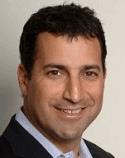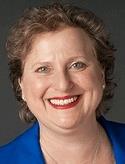Patient Centricity In Clinical Trials: Lessons Learned From Big Pharma

There’s a lot of talk about patient centricity in the clinical trial arena these days, and for good reason — hearing the voice of patient and incorporating patient perspectives into trial design can pay huge dividends for all stakeholders involved. But what does it mean to be patient centric, practically speaking? What tactics are leading pharma companies employing to make centricity a reality in their trials?
To find out, Clinical Leader reached out to patient centricity experts at four Big Pharma companies:
- Steven Immergut, Head of Communications and Advocacy Relations, Pharmaceuticals, Bayer
- Andrew Benzie, M.D., Head of Patients in Partnership, GSK
- Beverly Harrison, Head of Patient Support, and Katherine Capperella, Global Patient Engagement Leader, Janssen
- Roslyn Schneider, M.D., Global Patient Affairs Lead, Pfizer
In this article — Part 1 of a two-part Q&A — these leaders describe their recent patient centricity initiatives, the technologies they’ve employed, and the specific benefits their efforts have yielded for their companies and their patients.
What are a couple of patient centricity efforts currently underway at your company, and have you heard any positive feedback from patients on them?
 Steven Immergut, Bayer: Across our company, there’s a lot of work going on to involve patients in the clinical development process so we’re understanding and learning from their experiences early on. Earlier this year, we launched an internal, multichannel campaign featuring inspirational stories from patients and colleagues. These stories appeared on the walls of our U.S. headquarters and were distributed via our internal digital platforms. We kicked the campaign off with a simple “thank you” postcard to our employees for the work they do each day in making a difference for the patients we serve. We’ve also hosted panel discussions with patients living with multiple sclerosis, hemophilia A, and colorectal cancer. Through these initiatives, our employees have gained a deeper appreciation for the patient experience and its connection to their work. And patients have shared a lot of positive feedback, saying they’ve really appreciated the opportunity to share their stories, which has been extremely gratifying.
Steven Immergut, Bayer: Across our company, there’s a lot of work going on to involve patients in the clinical development process so we’re understanding and learning from their experiences early on. Earlier this year, we launched an internal, multichannel campaign featuring inspirational stories from patients and colleagues. These stories appeared on the walls of our U.S. headquarters and were distributed via our internal digital platforms. We kicked the campaign off with a simple “thank you” postcard to our employees for the work they do each day in making a difference for the patients we serve. We’ve also hosted panel discussions with patients living with multiple sclerosis, hemophilia A, and colorectal cancer. Through these initiatives, our employees have gained a deeper appreciation for the patient experience and its connection to their work. And patients have shared a lot of positive feedback, saying they’ve really appreciated the opportunity to share their stories, which has been extremely gratifying.
 Andrew Benzie, GSK: During the drug development process we work with patient advocacy groups in a variety of ways. For example, 12 years ago we founded a Focus on the Patient seminar series, which brings patients to GSK sites during the drug development process. Through this program, employees have the opportunity to hear directly from patients, caregivers, and advocates and to close knowledge gaps with the multidimensional aspects of the disease, from its clinical course to its effects on daily life and personal experiences. With one particular oncology medicine, patient voices helped us streamline the clinical trial design of a Phase 2 study so that it was less burdensome and more relevant to patients.
Andrew Benzie, GSK: During the drug development process we work with patient advocacy groups in a variety of ways. For example, 12 years ago we founded a Focus on the Patient seminar series, which brings patients to GSK sites during the drug development process. Through this program, employees have the opportunity to hear directly from patients, caregivers, and advocates and to close knowledge gaps with the multidimensional aspects of the disease, from its clinical course to its effects on daily life and personal experiences. With one particular oncology medicine, patient voices helped us streamline the clinical trial design of a Phase 2 study so that it was less burdensome and more relevant to patients.
Additionally, in September 2016 we developed the Patients in Partnership team, which brings enterprise leadership in establishing patient influence to GSK decision making, from early R&D through to marketed products. The team drives the process and business culture changes needed to increase patient involvement throughout the business and across the medicine lifecycle, reflecting the company’s renewed commitment to ensuring patients are truly at the center of its work.
 Beverly Harrison and Katherine Capperella, Janssen: Janssen is moving from doing things “for” patients to doing things “with” patients. For example, we are focusing on incorporating direct patient voice throughout the product lifecycle, beginning with disease area strategies and continuing through compound strategies, clinical plans, and formulation decisions. New tools have been implemented and processes updated to ensure that employees are incorporating patient perspectives consistently, and that people have been trained and expectations set. A global, cross-functional leadership team is in place to help lead this change, and progress is being measured via the Janssen Patient Engagement Dashboard.
Beverly Harrison and Katherine Capperella, Janssen: Janssen is moving from doing things “for” patients to doing things “with” patients. For example, we are focusing on incorporating direct patient voice throughout the product lifecycle, beginning with disease area strategies and continuing through compound strategies, clinical plans, and formulation decisions. New tools have been implemented and processes updated to ensure that employees are incorporating patient perspectives consistently, and that people have been trained and expectations set. A global, cross-functional leadership team is in place to help lead this change, and progress is being measured via the Janssen Patient Engagement Dashboard.
Some of the ways in which Janssen is generating dialogue with patients include R&D/patient advisory boards, partnering with patient groups to gather feedback and insights, and preceptorships. At a recent patient conference, Janssen shared that it is directly involving patients in development of disease area strategies, target product profiles, clinical trial plans, and formulations — and patients were appreciative of this change. Two examples were:
- Working with patients to redesign a nasal spray device for a medicine in the pipeline, resulting in improved correct use and more consistent proper dosing
- Modifying a high priority target product profile based on the need for patients to know sooner whether a therapy is working
In Spain, Janssen partnered with the schizophrenia patient community and created a program to reduce the stigma of the disease. A movie that highlighted real-life stories and patients was shown in movie theatres throughout the country and was nominated for a Goya Award. In Australia, Janssen worked with patients to understand and quantify what was most important in a therapy for chronic lymphocytic leukemia (CLL). This approach represented the patient voice in a measurable, data-oriented manner appropriate for health technology assessment.
In May 2015, Johnson & Johnson announced a first-of-its-kind pilot partnership between Janssen and the Division of Medical Ethics at the New York University (NYU) School of Medicine to form the Compassionate use Advisory Committee (CompAC). Composed of external bioethical experts, physicians, and patient representatives convened by NYU, the purpose of CompAC (a pilot program) is to ensure a fair, objective, and ethical evaluation of single patient requests for investigational medicines.
In addition, based on feedback from patient groups, Janssen has revised its working model by assigning primary points of contact and involving patient groups earlier in the product lifecycle.
 Roslyn Schneider, Pfizer: Pfizer is gaining momentum in embedding patient viewpoints in the processes that bring a therapy from the bench to the bedside. Grassroots efforts are strengthening, and leaders at many levels are now expecting more robust input from patients. One example: Our review committee for all clinical trial protocols is now routinely asking key patient-centered questions of teams, like “Have you discussed the protocol with patients and/or their representatives?” and “Does the protocol have relevant patient centric viewpoints?” This helps set the expectation from senior leaders.
Roslyn Schneider, Pfizer: Pfizer is gaining momentum in embedding patient viewpoints in the processes that bring a therapy from the bench to the bedside. Grassroots efforts are strengthening, and leaders at many levels are now expecting more robust input from patients. One example: Our review committee for all clinical trial protocols is now routinely asking key patient-centered questions of teams, like “Have you discussed the protocol with patients and/or their representatives?” and “Does the protocol have relevant patient centric viewpoints?” This helps set the expectation from senior leaders.
We’ve also engaged patients and advocates in reviewing protocols, endpoints, and the informed consent process for specific programs — and subsequently informed them about which of their insights we may and may not be able to integrate. The advocates and patients we’ve engaged have shared that this involvement and transparency was a positive experience, and the Pfizer teams have echoed that sentiment.
Are there any new technologies you see companies deploying that are having a positive impact on meeting the needs of patients?
Benzie: It’s incredibly important to understand the patient’s experience with their disease from the beginning of drug development — so we can understand their unmet needs, the concepts to measure, and how to ask about them. Concurrent with Phase 1, we interview patients in focus groups, face-to-face, or by telephone. Typically we’ll interview one or two dozen patients, depending on the heterogeneity of the condition. This disease area research, in addition to understanding of what our asset is proposed to do, helps us determine whether a patient-reported outcome (PRO) or other kind of assessment needs to be chosen — or if we need to develop a new measure to capture treatment benefits. PROs can be used to support regulatory approval of a new medicine, to differentiate our medicine (e.g., key secondary endpoint in label), and for utility calculations and cost-effectiveness evaluations.
Other teams at GSK are also trying to bring patients into the heart of our research through the use of mHealth technology. Here are two examples of projects that have been conducted:
- We built an iPhone app using Apple’s ResearchKit platform for our Patient Rheumatoid Arthritis Data from the Real World (PARADE) study. By using the iPhone as a health device, we have been able to monitor the impact a disease has on a patient’s day-to-day life. We were the first pharmaceutical company to use the Apple ResearchKit for this purpose.
- We partnered with Medidata Solutions on an award-winning project that continuously measured vital signs with mobile sensors and cloud computing technology. This project helped us evaluate the impact of wearable sensors in clinical trials.
Harrison and Capperella: Technology is a key focus area for patient engagement. Janssen and others are scaling up eConsent capabilities to improve the clinical trial enrollment process, and we are using wearables and electronic pill dispenser technology successfully in pilot scale, to improve patient experience and assist with adherence. Janssen recently incorporated a novel PRO built with patients into a clinical trial, which was accompanied by an electronic diary for patients to use. Following a recent patient/R&D ad board, Janssen is considering the incorporation of wearables to better understand triggers for flares.
Schneider: Our Clinical Innovation team is exploring, testing, and scaling a variety of technologies to advance more patient-centered experiences. These include what I will call the “usual suspects” such as eConsent and new digital data collection tools, but they also encompass more advanced approaches, including gamification and virtual reality.
Outside of clinical trials, we have an array of digital apps and web-based support tools that are intended to promote wellness, provide credible medical information, or assist patients and their healthcare teams in monitoring, managing, or preventing specific illnesses. Metrics that are meaningful to patients are lacking for most of these applications, lthough I believe this will change with the proliferation of technologies and greater involvement of end users in development beyond usability testing.
Immergut: There’s so much activity going on in this area — it’s all very exciting. At Bayer, we have a long legacy of developing and delivering patient-centric innovations across our therapeutic areas. As an example, since the introduction of Betaseron back in 1993, we’ve been focused on meeting the needs of MS patients. Last year, we launched Betaconnect, the first and only autoinjector that offers users the ability to customize and tailor aspects of their injection. We developed Betaconnect based on feedback from patients taking Betaseron and their caregivers. And we’re excited about its advancements on the horizon.
At the end of 2016, the FDA accepted Bayer’s filing of a supplemental biologics license application (BLA) for myBETAapp and the Betaconnect Navigator. MyBETAapp is intended to help Betaseron patients record their treatment information such as drug injections and injection sites. The Betaconnect Navigator is a tool that enables healthcare professionals the ability to review injection history for their patients. So nearly 25 years since the FDA approved Betaseron, we’re grateful to continue to innovate on behalf of the approximately 400,000 Americans currently living with MS.
In Part 2, our experts discuss programs related to patient diversity and patient recruitment at their firms, and take an industry-wide look at noteworthy innovations in patient centricity.
